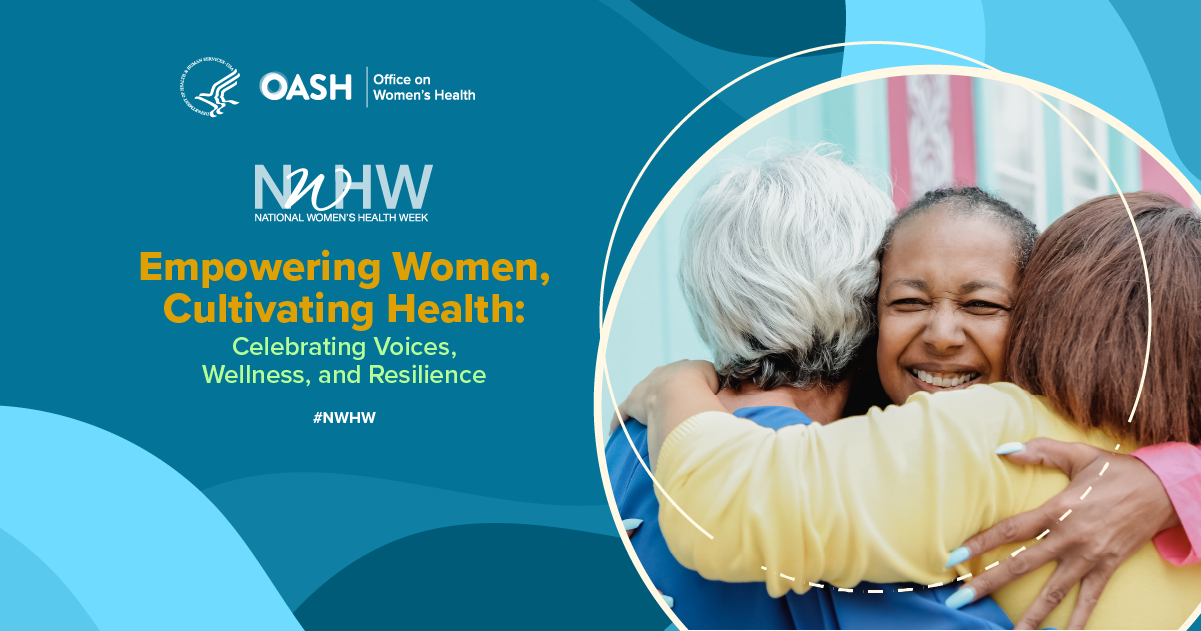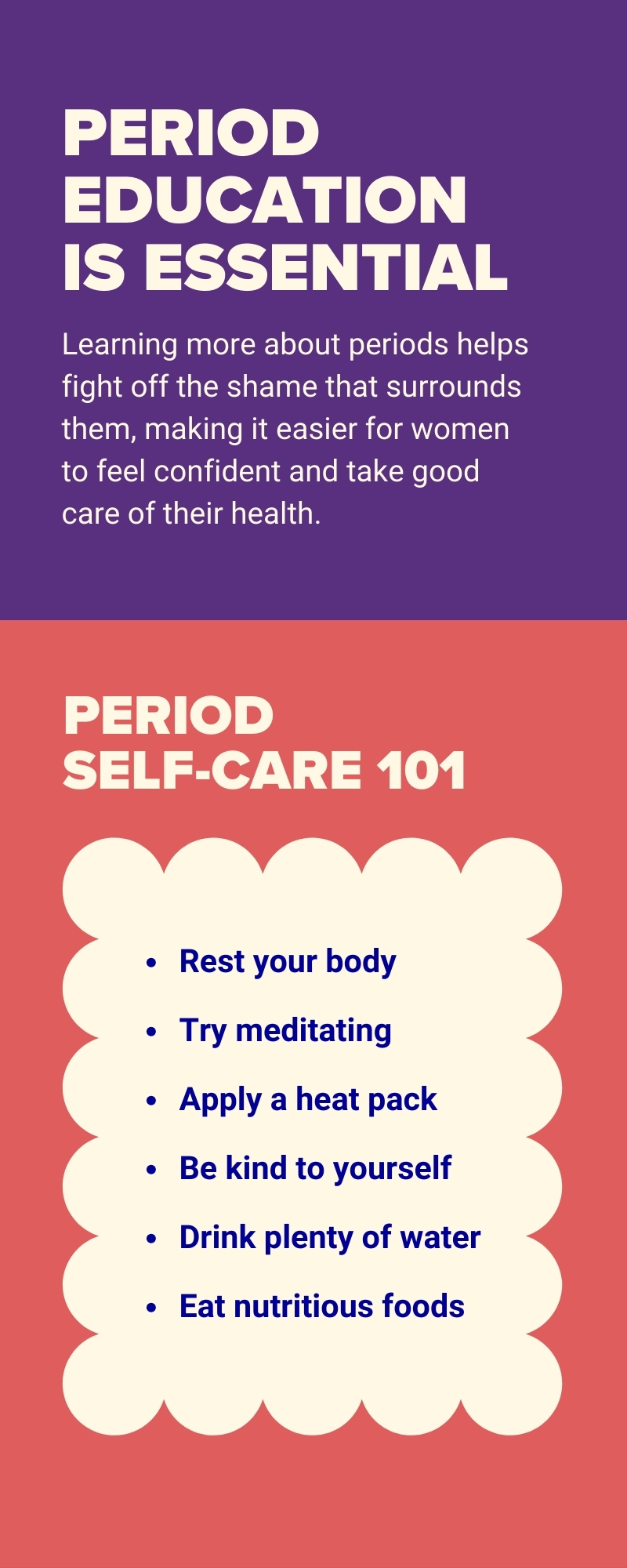
Breaking the Silence: Let’s Talk About Women’s Health
It’s time to get real about women’s health. Women’s health topics, including periods (menstruation), eating disorders, and reproductive health conditions, often carry a stigma, and many do not feel comfortable talking about these important issues. Half the world’s population will experience many of these health issues; talking about them helps us all learn more and feel more comfortable.
 Share our Women’s Health Myths and Facts social media graphics with your network to help reduce stigma and normalize women’s health issues.
Share our Women’s Health Myths and Facts social media graphics with your network to help reduce stigma and normalize women’s health issues.
Menstruation Is a Natural Process

First up, periods. They’re natural, but many people still feel uneasy talking about them. Every woman’s cycle is unique. Some have a tough time with pain, mood swings, or heavy flow, whereas others experience very few symptoms or little discomfort. It’s important to normalize discussing periods openly, whether it’s sharing tips for managing cramps or understanding how your cycle affects your body overall.
There is no one-size-fits-all with periods. Every woman’s body is different, and many women will experience changes in their cycle throughout their life due to factors like age, stress, birth control, and pregnancy.
- Regular but Varied: The typical menstrual cycle is 28 days long, but it’s typical for this to vary. It can be as short as 24 days or as long as 38 days in adults and 21 to 45 days for adolescents.
- Heavy Versus Light Flow: The average woman loses about 2 to 3 tablespoons (30 to 44 milliliters) of blood during her period, but this can range from 1 to 6 tablespoons (15 to 90 milliliters). What’s “normal” can widely vary.
- Cramps Aren’t Just Cramps: Up to 80% of women will experience menstrual cramps at some point in their lives, and for 5%–10%, these cramps can be severe enough to interfere with daily activities.
- Premenstrual Syndrome (PMS): About 90% of menstruating women experience some form of PMS, which can include mood swings, bloating, and headaches.
Want to learn more about menstrual cycles? Our easy-to-understand resource hub provides information on tracking your cycle, managing symptoms, and staying healthy.
Reproductive Health Conditions: More Common Than You Think
Many women struggle with conditions that involve and affect their reproductive organs, causing them pain, discomfort, and problems getting pregnant. A commonly undiagnosed and misunderstood reproductive health condition is endometriosis. Endometriosis happens when tissue similar to the lining of the uterus grows outside the uterus. It affects 1 in 10 women and can cause severe pain and fertility issues. Endometriosis symptoms can include painful periods, pain with intercourse, bleeding in between periods, or pain with peeing or pooping. Another common reproductive health condition affecting 6% to 12% of U.S. women of reproductive age is polycystic ovarian syndrome, or PCOS. PCOS is a set of symptoms, including irregular periods, skin and hair growth changes, abnormal growths in the ovaries, and fertility issues that are caused by hormone imbalances. Many women also experience uterine fibroids, or growths on or inside the uterus. Fibroids are not cancerous, and many do not have any symptoms, but some women experience heavy or longer periods, pain in the lower abdomen or back, and discomfort associated with going to the bathroom.
Because women’s pain is often dismissed or belittled, these conditions can sometimes take months to years to be properly diagnosed. These conditions have treatment options available to manage symptoms and improve reproductive health and function, but these can only be offered once patients receive a proper diagnosis. It is important that health care providers listen to the experiences of women and offer services and support to address their pain and discomfort.
Let’s Make a Change Together
Beyond these, there are so many other health conditions that women face, from mental health conditions to breast cancer. Each has its challenges but understanding and support can make all the difference.
The goal here is not just to talk about these issues but to change how we think about them. By talking about these issues openly, we can fight the stigma and support women who may feel alone or embarrassed about what are normal experiences for women. Health isn’t just physical; it’s mental and emotional, too. Understanding and support go a long way in making all people feel comfortable with their bodies and the health challenges they may face.

Start the conversation today. Whether you ask questions, share your story, or simply listen, every little bit helps break down the barriers and build a more supportive community. Remember, talking openly about women’s health isn’t just for women; it’s for everyone. Together, we can make a difference.
Resources to Learn More
- Blog: Eating Disorders in the LGBTQIA+ Community Part 1 and Part 2 - Office on Women’s Health
- Endometriosis Resources - Eunice Kennedy Shriver National Institute of Child Health and Human Development
- How to Talk with Your Doctor About Sensitive Issues - NIH National Institute on Aging
- Infographic: Don't Ignore Your Pelvic Floor - Eunice Kennedy Shriver National Institute of Child Health and Human Development
- Infographic: Pelvic Floor Disorders and Common Treatments - Eunice Kennedy Shriver National Institute of Child Health and Human Development
- Infographic: Understanding Infertility - Eunice Kennedy Shriver National Institute of Child Health and Human Development
- Let’s Talk About Eating Disorders Infographic - NIH National Institute of Mental Health
- Menstrual Hygiene - Centers for Disease Control and Prevention
- Polycystic Ovary Syndrome (PCOS) FAQs - The American College of Obstetricians and Gynecologists
- Polycystic Ovary Syndrome (PCOS) Resources - Eunice Kennedy Shriver National Institute of Child Health and Human Development
- Questions to Ask Your Doctor about Cancer - NIH National Cancer Institute
- Sharing Concerns about Your Eating Behaviors - National Eating Disorders Association
- Talking to Your Healthcare Provider About Domestic Violence - National Domestic Violence Hotline
- Teen Dating Violence Prevention Infographic - Centers for Disease Control and Prevention
- Uterine Fibroids Resources - Eunice Kennedy Shriver National Institute of Child Health and Human Development


